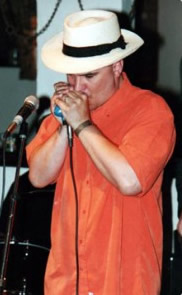Go Walkabout – Wireless Microphones
Four our final article in the Harmonica Microphones series, let’s ditch that cumbersome mic cable. Many players want to go wireless – fun, because you can go out in the audience and play, dance up on the bar, or simply have more freedom to roam around on stage. Here’s how:
 A wireless system always consists of two parts. The transmitter stays with you, connects to your microphone and sends the signal out into the air using radio waves. The receiver is located near and connected to your amp. There are many types of wireless systems available to us. As a rule, you usually get what you pay for. But there are some practical considerations. (more…)
A wireless system always consists of two parts. The transmitter stays with you, connects to your microphone and sends the signal out into the air using radio waves. The receiver is located near and connected to your amp. There are many types of wireless systems available to us. As a rule, you usually get what you pay for. But there are some practical considerations. (more…)

